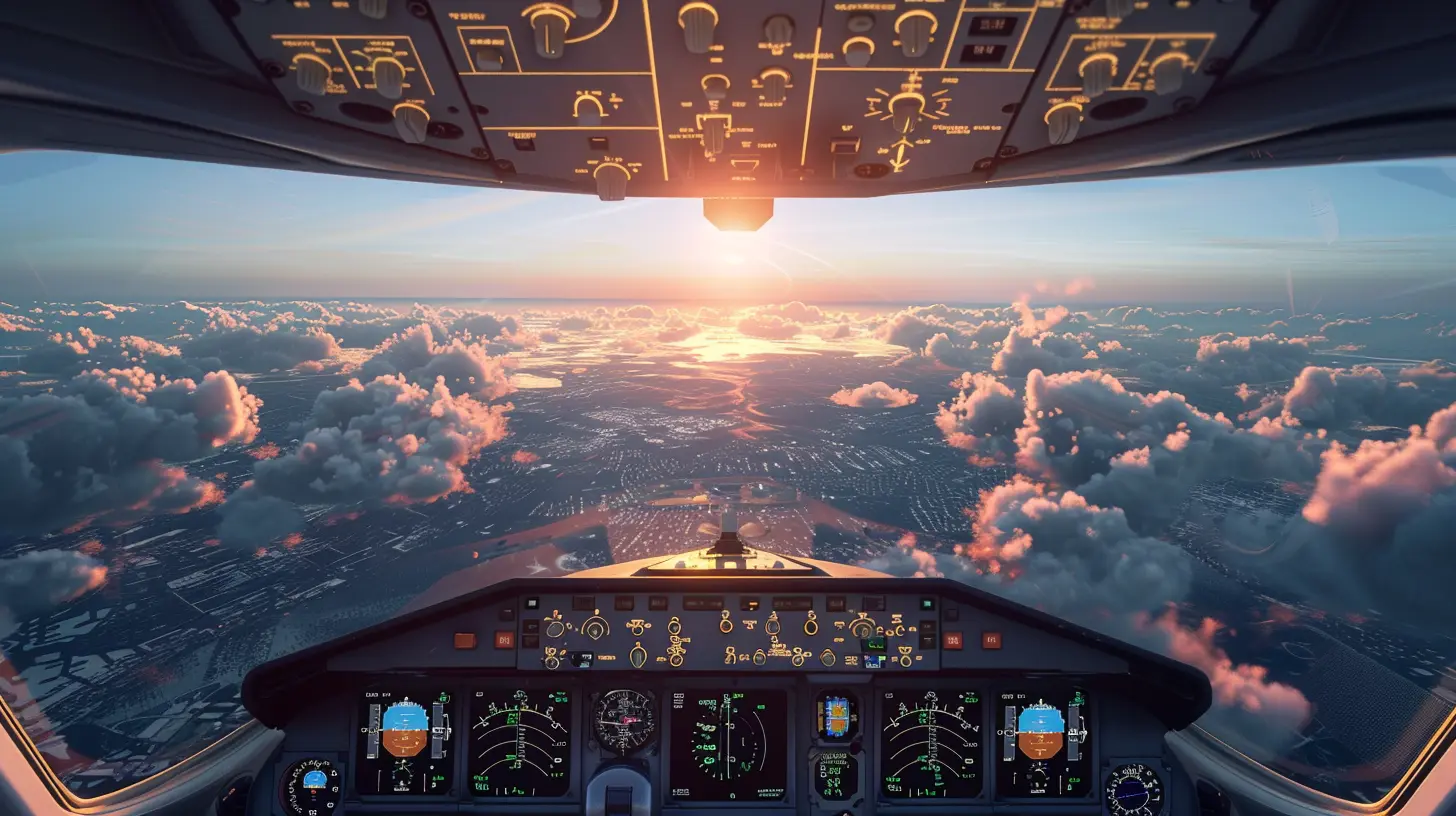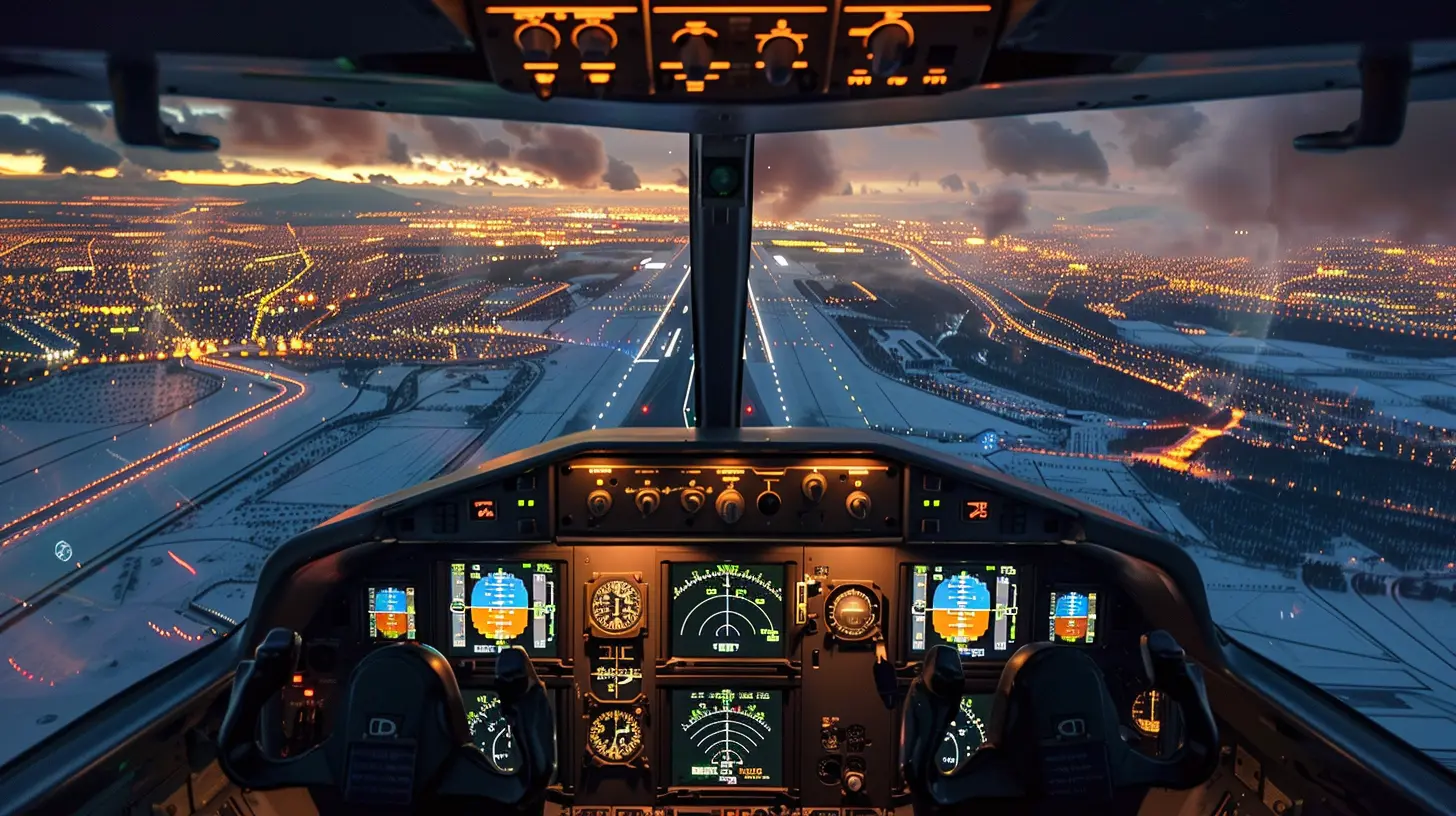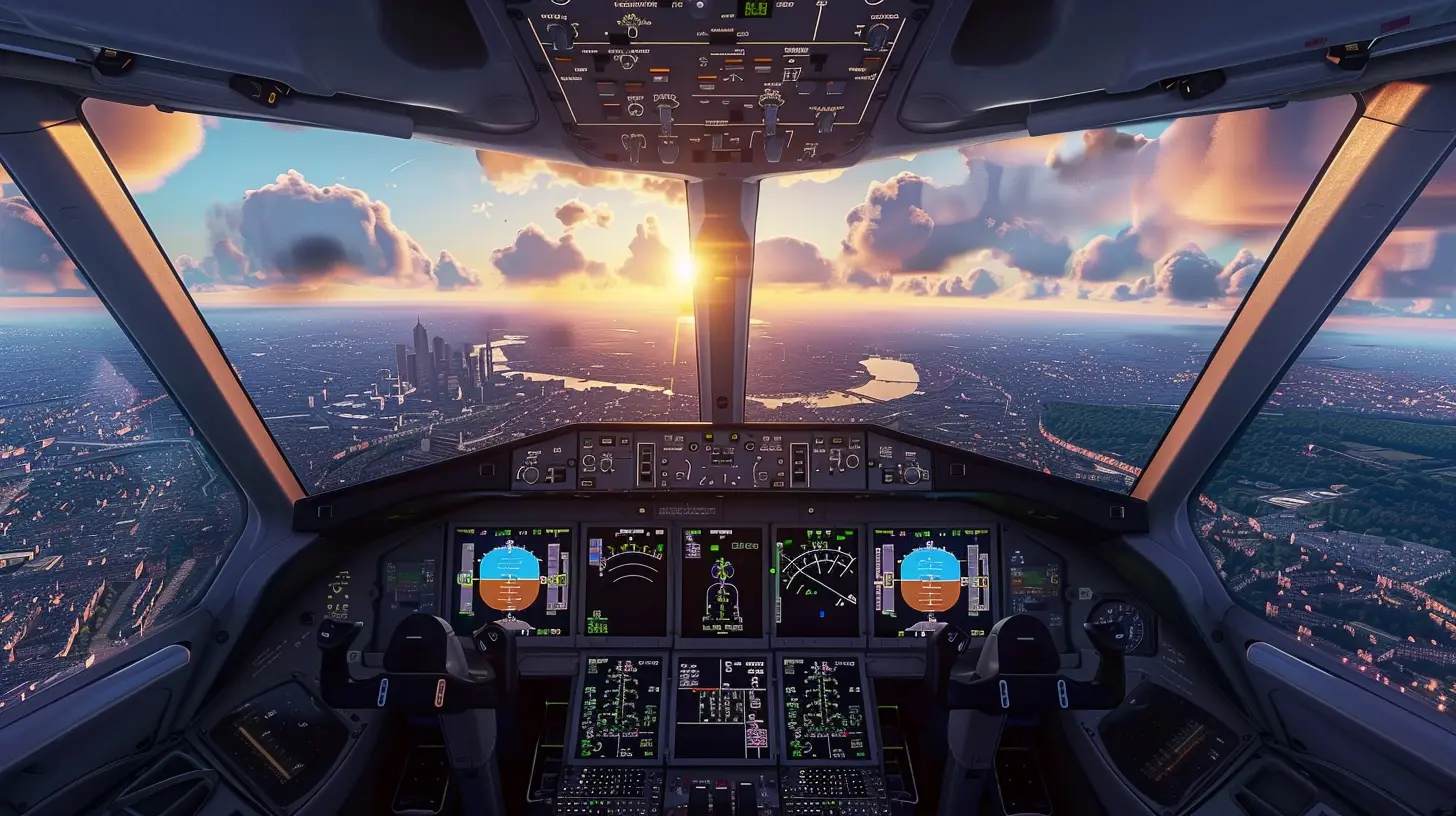Flight Simulators for Beginners: Take Off and Soar in No Time
6 October 2025
Flight simulators are a fantastic way to scratch that itch for adventure without ever leaving your home. Whether you're a hardcore aviation enthusiast or just someone curious about piloting planes, flight sims can immerse you in the thrill of flying. But hey, if you’re new to this world, it might feel overwhelming at first. So, buckle up, because in this guide, I’ll walk you through everything you need to know about flight simulators as a beginner. By the end of this, you’ll be ready to take off and soar with confidence!
What Are Flight Simulators and Why Should You Care?
Let’s start with the basics: what even is a flight simulator? Well, it’s exactly what it sounds like—a program or game that simulates the experience of flying an aircraft. Some focus on realism with jaw-dropping graphics and accurate physics, while others take a more arcade-style approach for a laid-back vibe.Why should you care? Simple. Flight simulators let you live out your piloting dreams without the hefty price tag of real-world training. Plus, the sense of accomplishment you’ll feel after your first smooth landing? Absolutely unbeatable. 
What You’ll Need to Get Started
Before you dive in, here’s a quick checklist of what you’ll need:1. A Decent PC or Gaming Console
Flight sims are resource-heavy beasts. Think of them like giant airplanes—they need a sturdy runway to perform their best. If you’re using a PC, aim for one with a good processor, a capable graphics card, and plenty of RAM. Popular consoles like the Xbox Series X or PlayStation 5 also support some flight sims, so they’re a great starting point for newcomers.2. Flight Controls (Optional But Recommended)
Sure, you can use a keyboard and mouse (or a console controller), but for the real pilot experience, grab a flight stick or a HOTAS (Hands-On Throttle and Stick). These tools give you better control and a more immersive feel. It’s like trading in your tricycle for a shiny new bike—it just feels right.3. A Comfortable Chair
This might seem trivial, but trust me, you’ll often find yourself glued to the screen for hours. A comfy chair makes a world of difference. Your back will thank you later!
Best Flight Simulators for Beginners
Now, onto the good stuff—what are the best flight simulators for someone just starting out? There are plenty of options out there, but I’ve rounded up my top picks that are beginner-friendly without skimping on fun or realism.1. Microsoft Flight Simulator
This one’s the crème de la crème of flight sims. It’s like the Swiss Army knife of the genre—versatile, feature-packed, and beautiful. Don’t let its stunning visuals intimidate you if you’re a newbie; Microsoft Flight Simulator has a wide range of tutorials to ease you into the controls and mechanics. Plus, who wouldn’t want to fly over their own house in photorealistic quality?- Why it’s beginner-friendly: Detailed in-game tutorials, intuitive controls, and adjustable difficulty settings.
- Available on: PC and Xbox Series X/S.
2. X-Plane 12
If you’re craving realism, X-Plane 12 is where it’s at. It doubles as a flight training tool for real pilots, but beginners don’t need to worry—it’s surprisingly approachable. You can start with smaller planes and gradually work your way up to the big leagues (like commercial airliners).- Why it’s beginner-friendly: Realistic physics combined with a library of pre-set scenarios to help you practice.
- Available on: PC and Mac.
3. FlightGear
Want a free option? FlightGear has got you covered. It’s an open-source simulator that may not have the same visual polish as the big names, but it more than makes up for it with its passionate community and endless customization options.- Why it’s beginner-friendly: It’s free (yep, zero dollars), so you can dip your toes in without committing to a purchase.
- Available on: PC, Mac, and Linux.
4. Aerofly FS 4
Aerofly FS 4 strikes a balance between realism and ease of use. It’s perfect for beginners who might feel overwhelmed by hardcore simulators. The user interface is clean, and the controls are intuitive. Plus, you don’t have to battle with endless settings just to get off the ground.- Why it’s beginner-friendly: Simple controls and a forgiving learning curve.
- Available on: PC.
5. Infinite Flight Simulator (Mobile Option)
Want to dip your toes into flight sims without investing in a PC or console? Infinite Flight Simulator is a mobile-friendly option that lets you experience the basics of flying on the go. It’s surprisingly robust for a mobile game, and it’s perfect for quick practice sessions.- Why it’s beginner-friendly: Portability and a straightforward interface.
- Available on: iOS and Android. 
Tips for Mastering Your First Flight
Alright, so you’ve picked your simulator and you’re ready to fly. Now what? Here are a few tips to make your maiden voyage a smooth one:1. Start Small
Don’t jump straight into a Boeing 747 expecting to nail it—it’s a recipe for disaster. Instead, start with smaller planes like Cessnas or turboprops. They’re easier to handle, kind of like learning to drive in a compact car before tackling an 18-wheeler.2. Follow Tutorials
Honestly, tutorials are your best friends. They’ll teach you the basics like takeoffs, landings, and navigation. Even seasoned virtual pilots revisit tutorials from time to time!3. Master the Basics Before Getting Fancy
Before you attempt barrel rolls or fly through storms, focus on mastering basic maneuvers. Don’t worry—there’s plenty of time to get fancy once you’ve nailed the essentials.4. Use Autopilot Sparingly
Autopilot is tempting, but don’t rely on it too much when you’re just starting out. Flying manually will help you learn the ropes and build confidence.5. Have Patience
Flying—virtually or otherwise—takes practice. Don’t beat yourself up if you crash a plane or land too hard. It’s all part of the journey!What Makes Flight Simulators So Addictive?
You might be thinking, “Okay, but why do people get so hooked on flight sims?” Great question!It’s all about the sense of achievement. When you first start, flying even a single route without crashing feels like climbing Mount Everest. As you improve, you’ll challenge yourself with trickier planes, tougher weather conditions, and longer flights.
And then there’s the exploration. Flight simulators let you travel the world from the comfort of your couch. Want to fly over the Eiffel Tower at sunset? Done. Feel like exploring the Grand Canyon? Go for it. The sky—quite literally—is the limit.
The Gateway to Real-World Flying
Here’s a fun thought: flight simulators can be a stepping stone to an actual pilot’s license. Many real-world pilots credit flight sims for inspiring their careers. So, who knows? That game you’re playing today might lead you to the cockpit of a real airplane someday.Ready to Soar?
Flight simulators are an incredible way to experience the thrill of flying, even if you’re starting from scratch. With the right tools, a little practice, and a dash of patience, you’ll be soaring through virtual skies in no time.So, why wait? Pick a simulator, fire up your engines, and let the adventure begin. After all, the sky isn’t just the limit—it’s your playground!
all images in this post were generated using AI tools
Category:
Simulation GamesAuthor:

Pascal Jennings
Discussion
rate this article
1 comments
Shelby Bennett
Flight simulators offer an accessible introduction to aviation for beginners, combining realistic controls with engaging gameplay. This article effectively highlights user-friendly options and essential tips, ensuring new pilots can quickly grasp the fundamentals and enjoy a rewarding flying experience without overwhelming complexity.
October 7, 2025 at 2:36 AM

Pascal Jennings
Thank you for your insightful comment! I'm glad you found the article helpful in highlighting accessible options for new pilots. Happy flying!


